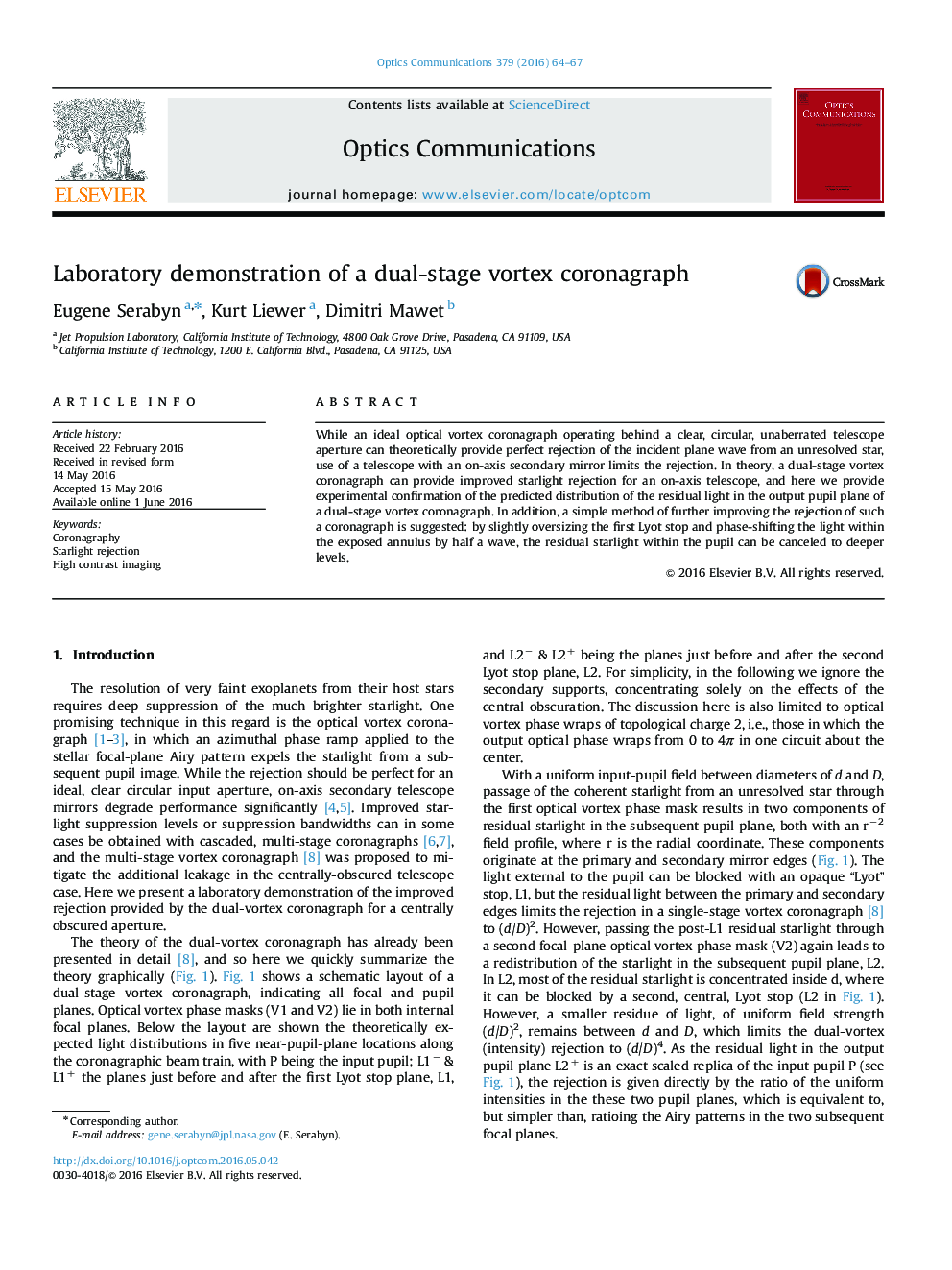| کد مقاله | کد نشریه | سال انتشار | مقاله انگلیسی | نسخه تمام متن |
|---|---|---|---|---|
| 1533124 | 1512544 | 2016 | 4 صفحه PDF | دانلود رایگان |
• The theory of the dual-stage vortex coronagraph is quickly summarized.
• The laboratory Infrared Coronagraphic Testbed is described.
• An experiment to measure the rejection of a dual stage coronagraph has been carried out.
• The results agree with theoretical predictions.
• A method of providing even better rejection is proposed.
While an ideal optical vortex coronagraph operating behind a clear, circular, unaberrated telescope aperture can theoretically provide perfect rejection of the incident plane wave from an unresolved star, use of a telescope with an on-axis secondary mirror limits the rejection. In theory, a dual-stage vortex coronagraph can provide improved starlight rejection for an on-axis telescope, and here we provide experimental confirmation of the predicted distribution of the residual light in the output pupil plane of a dual-stage vortex coronagraph. In addition, a simple method of further improving the rejection of such a coronagraph is suggested: by slightly oversizing the first Lyot stop and phase-shifting the light within the exposed annulus by half a wave, the residual starlight within the pupil can be canceled to deeper levels.
Journal: Optics Communications - Volume 379, 15 November 2016, Pages 64–67
